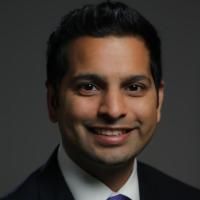Prevalence and predictors of no-shows to physical therapy for musculoskeletal conditions.
Date
2021-01
Editors
Journal Title
Journal ISSN
Volume Title
Repository Usage Stats
views
downloads
Citation Stats
Abstract
Objectives
Chronic pain affects 50 million Americans and is often treated with non-pharmacologic approaches like physical therapy. Developing a no-show prediction model for individuals seeking physical therapy care for musculoskeletal conditions has several benefits including enhancement of workforce efficiency without growing the existing provider pool, delivering guideline adherent care, and identifying those that may benefit from telehealth. The objective of this paper was to quantify the national prevalence of no-shows for patients seeking physical therapy care and to identify individual and organizational factors predicting whether a patient will be a no-show when seeking physical therapy care.Design
Retrospective cohort study.Setting
Commercial provider of physical therapy within the United States with 828 clinics across 26 states.Participants
Adolescent and adult patients (age cutoffs: 14-117 years) seeking non-pharmacological treatment for musculoskeletal conditions from January 1, 2016, to December 31, 2017 (n = 542,685). Exclusion criteria were a primary complaint not considered an MSK condition or improbable values for height, weight, or body mass index values. The study included 444,995 individuals.Primary and secondary outcome measures
Prevalence of no-shows for musculoskeletal conditions and predictors of patient no-show.Results
In our population, 73% missed at least 1 appointment for a given physical therapy care episode. Our model had moderate discrimination for no-shows (c-statistic:0.72, all appointments; 0.73, first 7 appointments) and was well calibrated, with predicted and observed no-shows in good agreement. Variables predicting higher no-show rates included insurance type; smoking-status; higher BMI; and more prior cancellations, time between visit and scheduling date, and between current and previous visit.Conclusions
The high prevalence of no-shows when seeking care for musculoskeletal conditions from physical therapists highlights an inefficiency that, unaddressed, could limit delivery of guideline-adherent care that advocates for earlier use of non-pharmacological treatments for musculoskeletal conditions and result in missed opportunities for using telehealth to deliver physical therapy.Type
Department
Description
Provenance
Subjects
Citation
Permalink
Published Version (Please cite this version)
Publication Info
Bhavsar, Nrupen A, Shannon M Doerfler, Anna Giczewska, Brooke Alhanti, Adam Lutz, Charles A Thigpen and Steven Z George (2021). Prevalence and predictors of no-shows to physical therapy for musculoskeletal conditions. PloS one, 16(5). p. e0251336. 10.1371/journal.pone.0251336 Retrieved from https://hdl.handle.net/10161/23311.
This is constructed from limited available data and may be imprecise. To cite this article, please review & use the official citation provided by the journal.
Collections
Scholars@Duke

Nrupen Bhavsar
I am a quantitative epidemiologist with methodological expertise in the design and analysis of observational studies that leverage data from cohort studies, registries, and the electronic health record (EHR). My background, training, and research is in the measurement and characterization of biomarkers, risk factors and treatment outcomes for chronic disease using real-world datasets. My primary research interests are in the use of novel sources of data, including the EHR, to conduct chronic disease research at the intersection of informatics, biostatistics, and epidemiology. My ongoing work aims to integrate informatics, epidemiology, and biostatistics to reduce the burden of chronic disease. I have topical expertise in multiple chronic diseases, including oncology, cardiovascular disease, and chronic kidney disease. In parallel, I have a portfolio of research that aims to understand the impact of social determinants of health, including dynamic neighborhood changes, such as gentrification, on the health of adults and children.
Brooke Alhanti
Charles Alden Thigpen

Steven Zachary George
Dr. George’s primary interest is research involving biopsychosocial models for the prevention and treatment of chronic musculoskeletal pain disorders. His long term goals are to 1) improve accuracy for predicting who is going to develop chronic pain; and 2) identify non-pharmacological treatment options that limit the development of chronic pain conditions. Dr. George is an active member of the American Physical Therapy Association, United States Association of the Study of Pain, and International Association for the Study of Pain.
Dr. George’s research projects have been supported by the National Institutes of Health, Department of Defense, and Orthopaedic Academy of the American Physical Therapy Association. Dr. George and his collaborators have authored over 330 peer-reviewed publications in leading medical, orthopaedic surgery, physical therapy, rehabilitation, and pain research journals. He currently serves as Editor-in-Chief for the Physical Therapy & Rehabilitation Journal. Dr. George has also been involved with clinical practice guideline development for the Academy of Orthopaedic Physical Therapy and the American Psychological Association.
Dr. George has been recognized with prestigious research awards from the American Physical Therapy Association, American Pain Society, and International Association for the Study of Pain. For example from the American Physical Therapy Association: he was named the 21st John H.P. Maley Lecturer, recognized as a Catherine Worthingham Fellow in 2017, and selected for the Marian Williams Award for Research in Physical Therapy in 2022.
Unless otherwise indicated, scholarly articles published by Duke faculty members are made available here with a CC-BY-NC (Creative Commons Attribution Non-Commercial) license, as enabled by the Duke Open Access Policy. If you wish to use the materials in ways not already permitted under CC-BY-NC, please consult the copyright owner. Other materials are made available here through the author’s grant of a non-exclusive license to make their work openly accessible.
